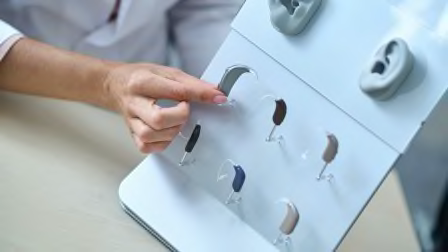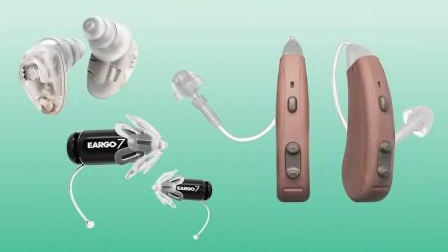Over-the-Counter Hearing Aids Move One Step Closer to Reality
The FDA has released long-awaited draft rules for the devices, which could be in stores as soon as 2022

The Food and Drug Administration released a first draft on Tuesday of the rules that will govern over-the-counter hearing aids, a new category of an essential device that’s underused and often out of reach.
The draft rules, which will probably be finalized sometime in 2022, are a major step toward making OTC hearing aids available to millions of adults in the U.S. who have mild to moderate hearing loss.
“We open the door to an easier process and a more affordable process for people to have access to good quality hearing aids,” Xavier Becerra, secretary of health and human services, said in a call with media today.
Why OTC Hearing Aids Are Needed
About 37.5 million Americans 18 and older report some trouble hearing, according to the FDA. “Despite the high prevalence and public health impact of hearing loss, only about a fifth of people who could benefit from a hearing aid are currently using one,” Janet Woodcock, MD, the FDA’s acting commissioner, said in today’s media call.
In designating a new category of OTC hearing aids, the agency aims to help alleviate some of the key barriers people encounter in getting hearing aids, including their high price and the difficulty of accessing them. Traditional hearing aids cost $1,400 to $6,000 per pair.
“This allows us to put hearing devices more in reach of communities that have often been left out,” Becerra said. “Communities of color, the underserved, have typically and traditionally lacked access to hearing aids.”
Officials said they also expect the new OTC hearing aids to foster innovation in hearing-aid technology and competition among hearing-aid manufacturers. “It’ll encourage companies to develop new devices that really are catering to consumers, so it’s consumer choice that will drive what’s out there in the market for people to get,” Becerra said.
What the New Rules Say About OTC Hearing Aids
Several experts we contacted said they’ll need time to read, digest, and understand the rules, and to provide feedback to the FDA. But here are some of the key takeaways.
- Changes in the ways hearing aids are classified: Currently, consumers can buy certain aids directly from manufacturers. But this can be a confusing marketplace, governed in part by conflicting state laws. It appears that under the new FDA rules, all hearing aids that are not “prescription”—sold via a licensed provider—will have to comply with over-the-counter regulations.
- Specific technical requirements for OTC hearing aids designed to ensure they’re safe and effective: For instance, the FDA is proposing a maximum volume of a hearing aid’s output, one it considers low enough not to damage a person’s hearing but high enough that the hearing aid will provide a benefit.
- Requirements that OTC hearing aids be customizable by the user: Traditional hearing aids are customized by an audiologist or other provider. The FDA said it expects that these requirements will mean most OTC hearing aids will fall under the subcategory of “self-fitting hearing aids,” which was newly created earlier this year, and which will require manufacturers to receive clearance from the FDA before going to market with their devices.
- An explanation of what regulations states are allowed to enact with regard to hearing aids: States won’t be allowed to limit the sales of OTC hearing aids in any way, such as requiring a hearing test before purchase, for example.
Cavitt says that once these products are available, consumers will need to be proactive about researching products and learning more about their own hearing health.
A number of useful tools for evaluating your own hearing health are available. The Consumer Ear Disease Risk Assessment from Northwestern University, for example, is still being studied but can help you figure out whether you need to see a doctor about a hearing-related problem. And the World Health Organization’s HearWHO app can help you determine whether or not you have hearing loss. To have your hearing professionally evaluated, you may need a referral from your primary care provider, depending on your insurance.
Consumer Reports rates traditional hearing-aid brands and retailers, available to CR members. Read more about shopping for hearing aids in our buying guide.




















